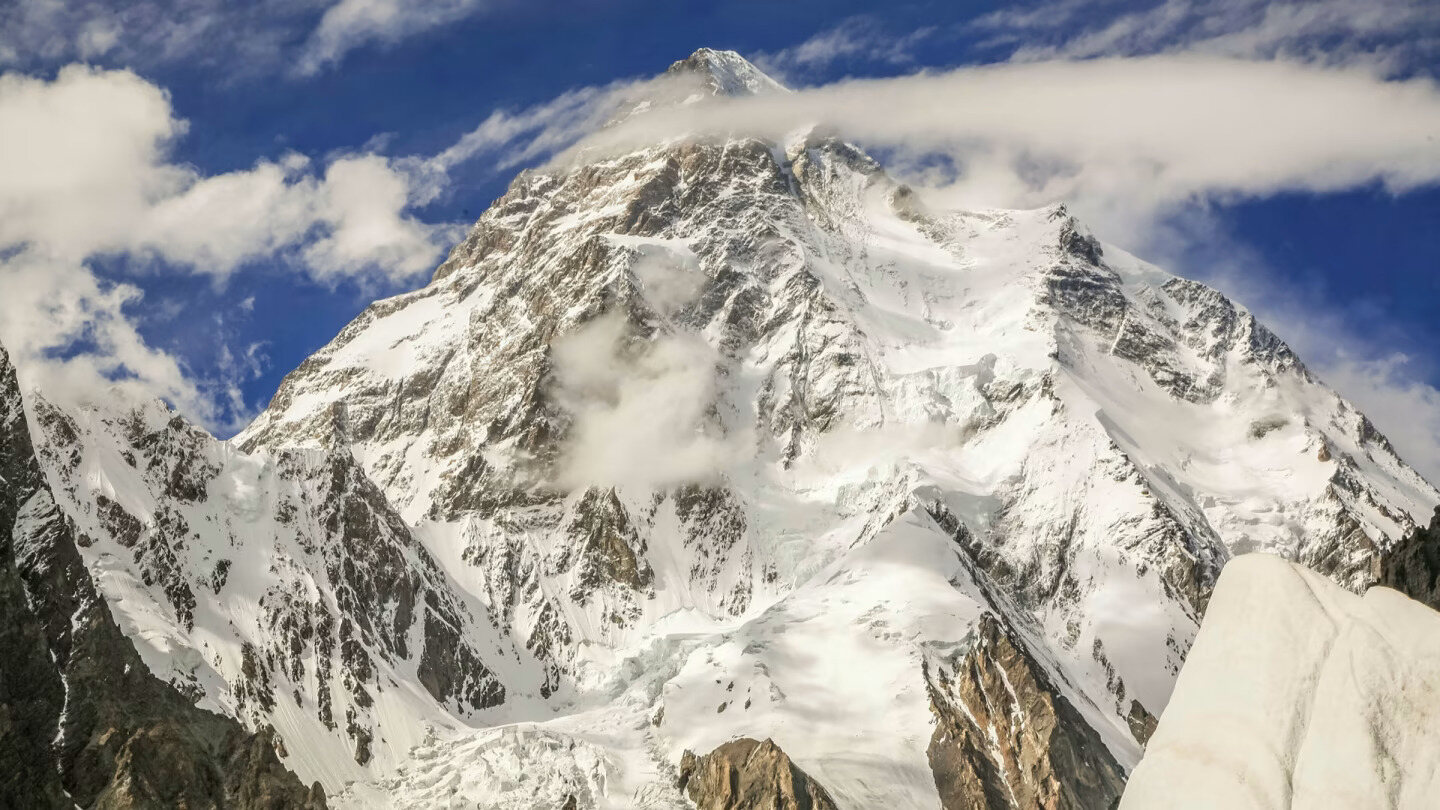
Mount K2, also known as Mount Godwin-Austen or Chhogori, is the second highest mountain in the world, standing tall at 8,611 meters (28,251 feet). Located in the Karakoram Range on the border between Pakistan and China, K2 is renowned for its challenging climbing conditions and awe-inspiring beauty. In this article, we will explore 11 fascinating facts about this majestic peak, delving into its history, significance, and unique characteristics. From its formidable reputation among climbers to the mesmerizing views from its summit, Mount K2 continues to captivate adventurers and enthusiasts alike. Join us as we embark on a journey to unravel the allure and mystique of this iconic mountain.
Key Takeaways:
- K2, the “Savage Mountain,” is the second highest peak in the world, located on the China-Pakistan border. It has never been conquered in winter and has a higher fatality rate than Mount Everest.
- Conservation efforts are underway to protect K2 and its surroundings. The mountain’s name, “K2,” comes from the Great Trigonometrical Survey, and it is composed of a mix of sedimentary and metamorphic rocks.
K2 is the second highest mountain in the world.
Rising to an awe-inspiring height of 8,611 meters (28,251 feet) above sea level, K2 is renowned as the second highest peak on Earth, trailing only Mount Everest.
It is located on the China-Pakistan border.
Situated on the border between the Baltistan region of northern Pakistan and the Taxkorgan Tajik Autonomous County of Xinjiang, China, K2 boasts a dramatic and breathtaking setting.
K2 is known as the "Savage Mountain."
This moniker reflects the extreme difficulty and danger associated with ascending K2, as well as the treacherous weather conditions that prevail on its slopes.
The first successful ascent of K2 was in 1954.
Italian climbers Lino Lacedelli and Achille Compagnoni achieved this historic feat as part of an Italian expedition, marking a monumental triumph in the realm of mountaineering.
K2 is part of the Karakoram Range.
Situated in the heart of the Karakoram Range, K2 is surrounded by a stunning landscape characterized by rugged peaks, expansive glaciers, and remote valleys.
The mountain has never been climbed in winter.
Despite numerous attempts, no mountaineer has yet conquered K2 during the harsh winter months, underscoring the formidable challenges posed by its icy slopes and fierce winds.
K2 has a higher fatality rate than Mount Everest.
Regarded as one of the most perilous mountains to climb, K2 has a higher fatality rate for those attempting to reach its summit compared to Mount Everest.
The mountain has multiple routes to the summit.
While the Abruzzi Spur and the Cesen Route are among the most popular paths to the summit, K2 offers several other challenging routes that demand exceptional skill and courage.
K2 is composed of a mix of sedimentary and metamorphic rocks.
The geology of K2 includes a diverse array of sedimentary and metamorphic rocks, adding to the mountain's geological significance and allure for researchers and geologists.
The name "K2" is derived from the Great Trigonometrical Survey.
In the 19th century, the mountain was cataloged as "K2" by the Great Trigonometrical Survey of British India, a name that has persisted through the years.
There are ongoing conservation efforts to protect K2 and its surrounding environment.
Given its ecological and cultural significance, concerted efforts are underway to safeguard K2 and the broader Karakoram Range, preserving their natural splendor for future generations to appreciate and cherish.
Mount K2, also known as the Savage Mountain, stands as the second highest peak on Earth, soaring to an impressive elevation of 8,611 meters (28,251 feet) above sea level. Situated on the border between the Baltistan region of northern Pakistan and the Taxkorgan Tajik Autonomous County of Xinjiang, China, K2 commands a striking presence in the Karakoram Range. Renowned for its formidable challenges and perilous conditions, the mountain has earned a reputation as one of the most treacherous peaks to conquer. Despite its allure to intrepid mountaineers, K2 has never been summited during the winter, and its fatality rate surpasses that of Mount Everest. With ongoing conservation initiatives aimed at preserving its natural splendor, K2 continues to captivate and inspire adventurers and conservationists alike, perpetuating its legacy as a symbol of both triumph and danger in the world of mountaineering.
Conclusion
In conclusion, Mount K2 stands as a formidable testament to the grandeur of nature and the indomitable spirit of human endeavor. Its breathtaking beauty, treacherous terrain, and awe-inspiring height make it a coveted challenge for mountaineers and a symbol of perseverance. The rich history, unique geological composition, and extreme weather conditions surrounding K2 add to its mystique, captivating adventurers and researchers alike. As we continue to explore and understand this majestic peak, it serves as a reminder of the boundless wonders of our planet and the unyielding determination of those who seek to conquer its heights.
FAQs
What is the significance of K2's other name, "Mount Godwin-Austen"?
K2 is also known as Mount Godwin-Austen in honor of Henry Godwin-Austen, a 19th-century British geographer who extensively mapped the region. This alternate name pays homage to his pioneering contributions to the understanding of the area's geography and topography.
How challenging is it to climb K2 compared to Mount Everest?
Climbing K2 is widely regarded as more technically demanding and perilous than ascending Mount Everest. The steep, icy slopes, unpredictable weather patterns, and frequent avalanches make K2 a daunting and formidable feat, requiring exceptional skill, experience, and physical endurance from mountaineers.
Was this page helpful?
Our commitment to delivering trustworthy and engaging content is at the heart of what we do. Each fact on our site is contributed by real users like you, bringing a wealth of diverse insights and information. To ensure the highest standards of accuracy and reliability, our dedicated editors meticulously review each submission. This process guarantees that the facts we share are not only fascinating but also credible. Trust in our commitment to quality and authenticity as you explore and learn with us.
